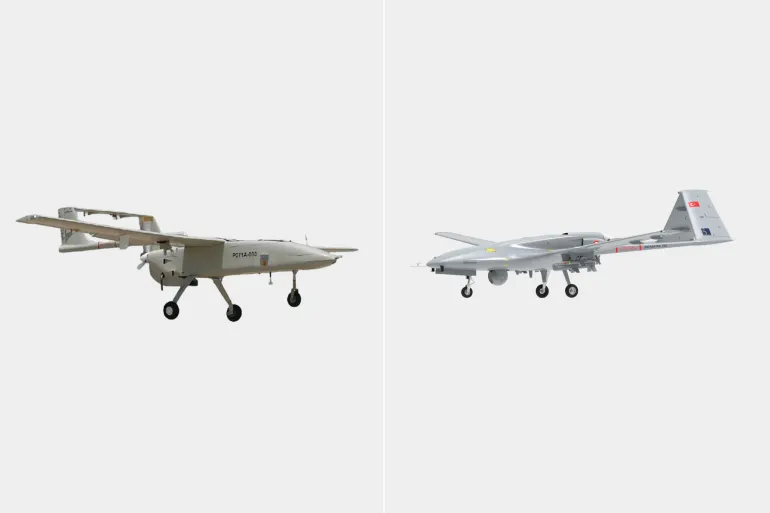The SC
ELITE MEMBER

- Joined
- Feb 13, 2012
- Messages
- 32,233
- Reaction score
- 21
- Country
- Location


Ryan Firebee I drone
After World War II, the US military began relocating drones on reconnaissance missions. The first drone to undergo the conversion process was the Ryan Firebee I, which in 1951 demonstrated the ability to stay aloft for two hours while reaching an altitude of 60,000 feet (18,288 metres). During the Cold War, the US military shifted its focus to building more accurate spy drones. Small drones, equipped with radio-controlled film cameras, have flown over China and North Vietnam to gather intelligence and images without risking the lives of the pilots. One of the drawbacks of the drone at that time was that it was expensive, and controlling it had to be within the range of its analog radio signals. And with the increase in innovation in this field, those who control drones can control them from thousands of miles away, through satellite networks extending all over the world, and they are able to travel a distance of 400 nautical miles (643.74 km) and can remain in the sky for 14 hours. It is continuous, and it allows generals, military leaders, and politicians to watch the war they are waging on the other side of the world, and live it on television from anywhere in the world. The drones turned from spy planes into assassination weapons!
In 2000, the United States took the final leap forward when the Air Force and the CIA became the first to successfully use drones with missiles, as part of a CIA attempt to kill Osama bin Laden. On October 7, 2001, a Predator drone launched the first combat strike by a remotely piloted aircraft in Kandahar, Afghanistan, in an attempt to neutralize suspected Taliban leader Mullah Muhammad Omar. Although the mission failed to achieve the intended goal, the event marked the dawn of a new era of military drones. And then it was used in at least seven countries, throughout the 15-year war on so-called terrorism by the United States. They gathered information for American intelligence meticulously on the battlefield, finding and killing terrorists and insurgents (from an American point of view). Whereas, the drones are now used - after being armed - to enable their operators to pursue and kill people without having to meet them face to face, such as the "MQ-9 Reaper" drone, known as the "reaper", which Washington used to kill the Iranian Qassem Soleimani - The commander of the Quds Force, Soleimani was the mastermind of Iran's activities in the Middle East, and its de facto foreign minister, in matters of war and peace - this type of aircraft is distinguished by its advanced capabilities, as it can fly for 1,150 miles (1,850.7456 km) and at altitudes of up to 50 thousand feet. It has a unique ability to launch strikes against sensitive targets with high accuracy and in record time and carries on board wide range remote sensing systems, an integrated multi-mode communications suite, precision weapons, and includes laser search and monitoring tools to locate targets with pinpoint accuracy. It can be used for intelligence and surveillance missions, assist in search and reconnaissance missions, combat rescue, and assist forces in “implementing asymmetric warfare operations.”

An unmanned aerial vehicle, the MQ-9 Reaper.
Unfortunately, since the unmanned combat aircraft officially entered the US Army, they have carried out thousands of successful missions, but with dire consequences at times. The 2016 statistics issued by President Obama revealed that 473 raids have caused between 2372 and 2581 deaths since 2009. And according to a report issued in 2014 in the Guardian, the number of civilian deaths resulting from strikes by US drones reached about 6,000 people!!!

And the advancement of drones in the Russia-Ukraine conflict has accelerated a long-awaited technological trend — which could soon bring the world's first fully autonomous combat robots to the battlefield — ushering in a new era of warfare. The longer the war, the more likely it is that aircraft will be used. Unmanned aerial vehicles to identify, select, and attack targets without the aid of humans, according to military analysts, combatants, and AI researchers. This would mark a revolution in military technology as profound as the introduction of the machine gun.
By:
Mr. Dr. Ghada Amer
Dean of the Faculty of Engineering - Misr University for Science and Technology
Lecturer of Nasser Military Academy for Postgraduate Studies
